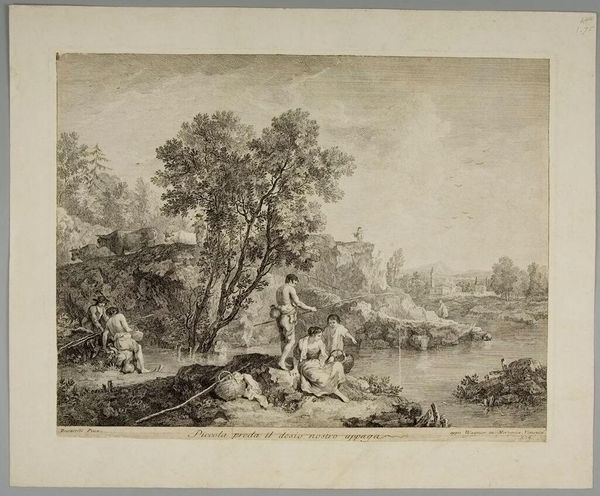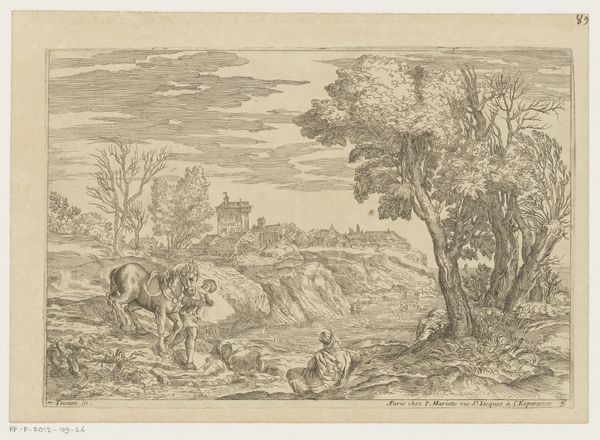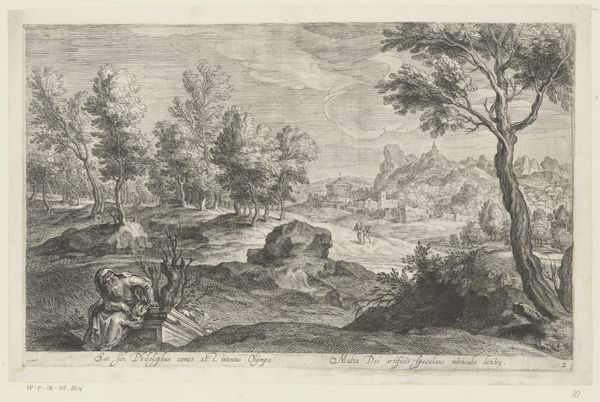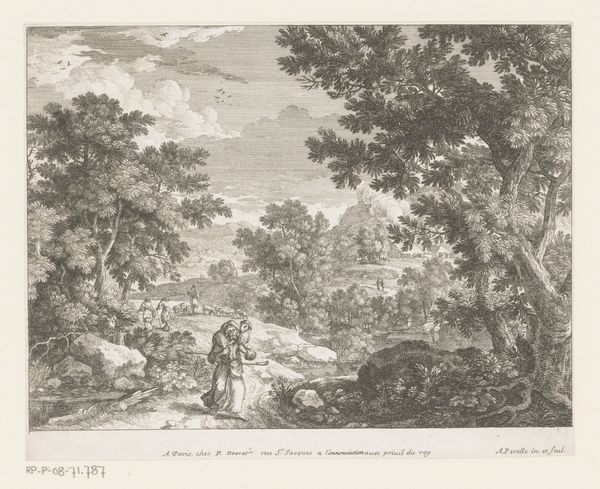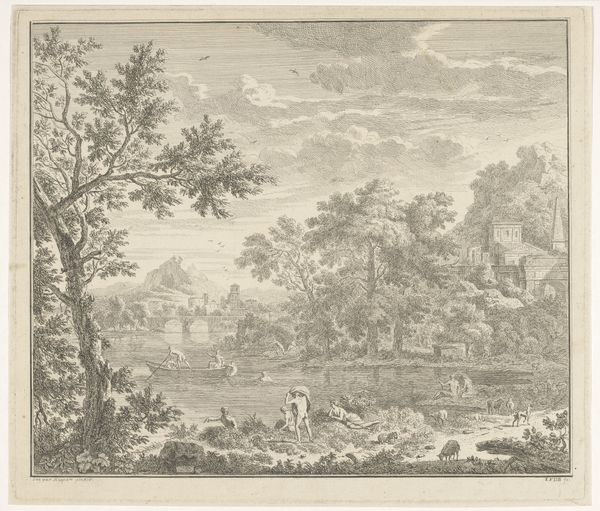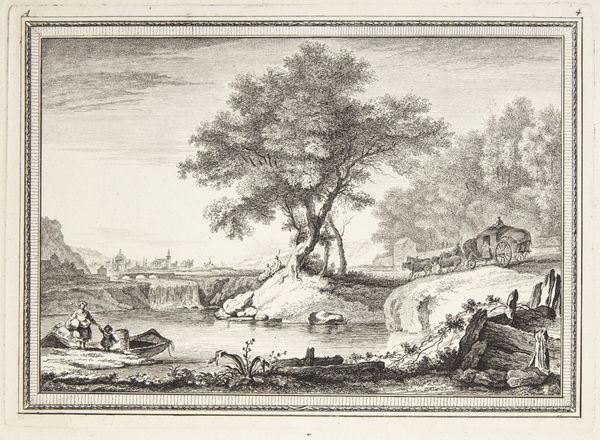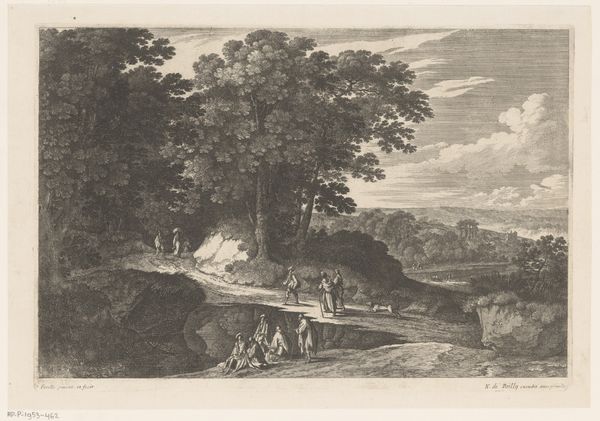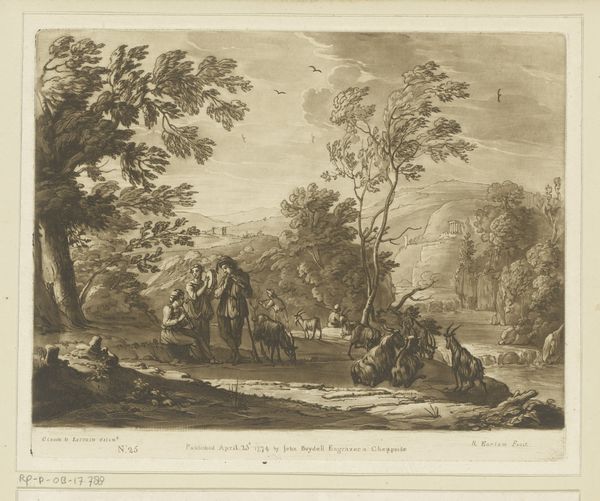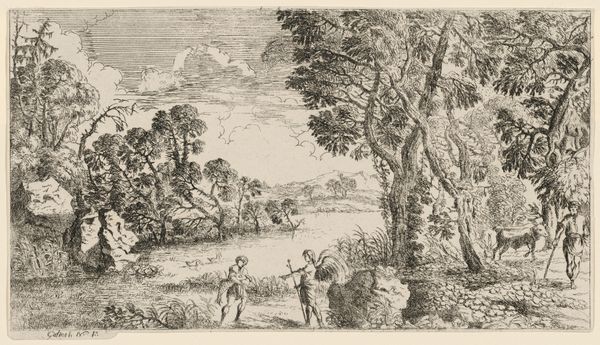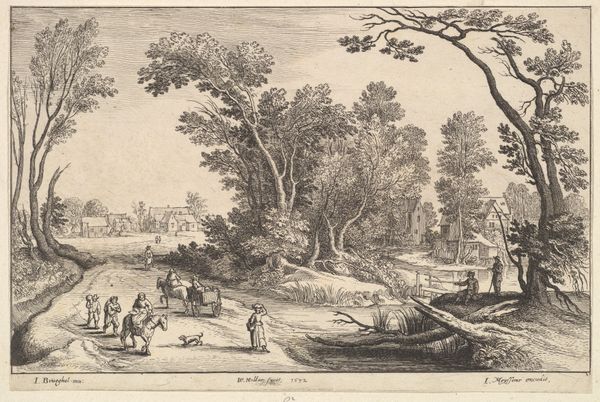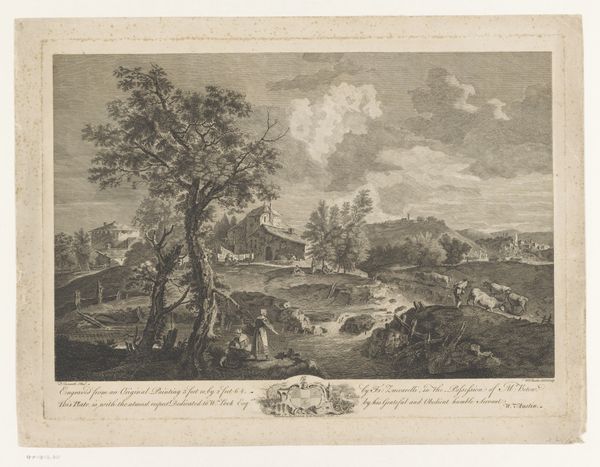
Dimensions: height mm, width mm
Copyright: Rijks Museum: Open Domain
Giovanni Volpato made this print, Landschap met hengelaar, after F. Zuccarelli, sometime in the late 18th century. It offers a vision of Arcadian harmony, where the lines between work and leisure, culture and nature, seem effortlessly blurred. Prints like these gained popularity in the 1700s, in part because of the rise of the Grand Tour, a cultural phenomenon where wealthy Europeans, particularly the British, would travel to the continent, especially Italy, to soak up its artistic and cultural heritage. Volpato, being based in Rome, was well-positioned to capitalize on this trend. He produced prints of classical sculptures and Italian landscapes that visitors could take home as souvenirs, tokens of their refined taste and cultural awareness. But these images didn’t just reflect reality; they actively shaped perceptions. By presenting an idealized version of Italy, artists like Volpato reinforced the cultural dominance of the classical world and the aesthetic values of the European elite. To understand this print fully, one might explore the history of the Grand Tour, the market for prints in 18th-century Europe, and the ways in which landscape imagery was used to construct national and cultural identities.
Comments
No comments
Be the first to comment and join the conversation on the ultimate creative platform.

